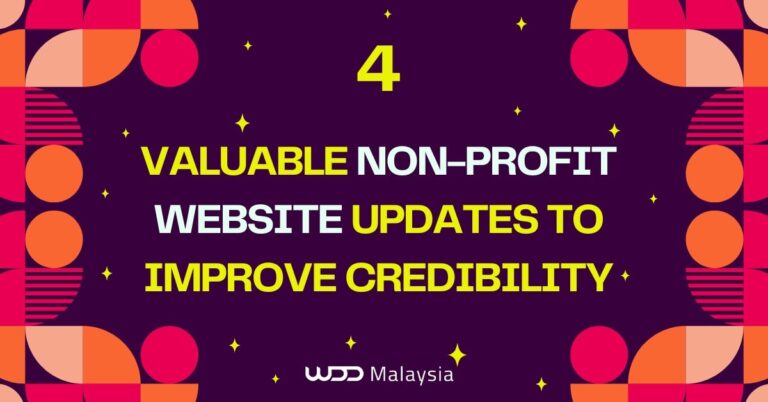
AB testing, also referred to as split testing, is a research method that involves comparing two versions of a webpage, advertisement, or email to determine which performs more effectively. By building multiple versions of webpage elements or features, businesses can test and optimize for better conversion rates and user engagement.
By relying on data-driven decisions instead of guesswork, this testing method enhances user experience by identifying elements that resonate most with your audience. For example, A/B testing can be used to evaluate different page layouts or headlines to see which version captures more interest and engagement from website visitors.
Through this controlled experiment, businesses can understand user behavior and make informed decisions that improve web pages, ultimately leading to increased conversion rates and user engagement. In the realm of marketing, A/B testing plays a pivotal role in optimizing campaigns and achieving business goals.
By uncovering what drives user actions, this experimentation method helps businesses improve their key performance indicators more efficiently. Leveraging existing data and testing multiple variations, companies can enhance their user engagement and overall marketing strategies. By continuously refining their approach based on statistically significant results, businesses can not only improve UX but also increase revenue and improve the effectiveness of their marketing efforts.
Key Takeaways
A/B testing helps you make smart choices using data. Compare two versions of a webpage or ad to find out which works better.
Test one thing at a time. This helps you see what changes improve results.
Do A/B tests often to learn what users like and follow trends. Testing often makes your website and ads work better.
Set clear goals you can measure before testing. This helps you see if your changes are working.
Study the results closely and trust the data. Use what you learn to make better decisions for your website and ads.
The Benefits of AB Testing
Enhancing User Experience
Improving navigation and usability
A/B testing is an essential tool for enhancing user experience and optimizing marketing strategies. By comparing different layouts, menus, or button placements, businesses can identify what works best for their users and improve navigation. For instance, implementing a sticky navigation bar can enable users to locate pages more swiftly, making the website more user-friendly and enjoyable.
This research method, also known as split testing, leverages data-driven decisions to refine web pages and boost conversion rates. Testing elements during these phases can further optimize website performance by revisiting previous tests and applying learned insights.
By continuously testing and analyzing statistically significant results, businesses can understand user behavior, increase revenue, and enhance user engagement. This controlled experiment allows companies to make informed decisions, aligning their strategies with user preferences and achieving business goals more effectively.
Personalizing content for diverse user needs
Recognizing that not all users interact with your site in the same way is crucial for tailoring content to diverse groups, and A/B testing plays a pivotal role in this process. By experimenting with different headlines, images, or product suggestions, businesses can determine what resonates best with each audience segment.
This personalization not only enhances user experience but also fosters loyalty, encouraging users to return to your site. A/B testing, or split testing, allows you to refine your approach using data-driven insights, ultimately leading to increased user engagement and conversion rates.
Boosting Conversion Rates
Optimizing campaigns to increase conversions
A/B testing is a critical component in driving user engagement and boosting conversion rates. By experimenting with elements such as button colors and landing page designs, businesses can determine which variations perform better. For instance, testing different call-to-action phrases can reveal which ones yield higher click-through rates, ultimately enhancing the success of marketing campaigns.
This process, rooted in data-driven decision-making, allows businesses to refine their strategies based on statistically significant results, ensuring a more effective approach to achieving business goals. Additionally, it is essential to test multiple variations to experiment with different elements, such as headers and forms, aiming to enhance user experience and reduce bounce rates.
Reducing bounce rates and improving engagement
High bounce rates indicate that users are quickly exiting your site, which can be detrimental to engagement and conversions. A/B testing offers a solution by pinpointing elements that retain user interest.
By experimenting with various factors such as page load times, content presentation styles, and imagery, you can discover what encourages users to linger longer on your site. When users remain engaged, the likelihood of them taking desired actions increases, ultimately enhancing your website’s performance and achieving business goals.
Supporting Data-Driven Decisions
Eliminating guesswork in UX and marketing
A/B testing, a cornerstone of effective UX and marketing strategies, leverages real data to eliminate guesswork and inform smart decisions. By comparing two versions of a webpage or marketing material, this testing method ensures that changes are grounded in facts, leading to more impactful results. Insights from previous tests can further enhance the effectiveness of new A/B testing endeavors.
Each variation is meticulously evaluated for its performance, allowing businesses to refine their approaches based on statistically significant outcomes. This data-driven strategy not only enhances website functionality and marketing effectiveness but also aligns efforts with user preferences, ultimately boosting conversion rates and achieving business goals.
Gaining actionable insights into user behavior
Understanding user behavior on your website is crucial for optimizing performance and marketing strategies. A/B testing, or split testing, provides insights into what captures user attention and preference. By analyzing these elements, you can make data-driven improvements to your website and marketing efforts, leading to better outcomes. Remember to test one variable at a time to ensure clarity in results, making it easier to identify what changes are effective.
How to Conduct A/B Testing
Research and Define Goals
Find the problem or chance to improve
Begin by identifying areas of improvement on your website, emails, or advertisements, such as high bounce rates or low engagement with call-to-action buttons. Utilize analytics tools to collect data and pinpoint specific issues. Once you’ve identified the problem, set clear, measurable goals, like increasing button clicks by 10%. These objectives will guide your A/B testing efforts. Ensure you have sufficient traffic to obtain reliable results and actionable insights.
Formulate a hypothesis based on the data, such as “changing the button color to red will increase clicks by 15%,” ensuring it aligns with your business goals. Select one element to test at a time, whether it’s headlines, images, or button placements, for clear insights. Use tools like Google Optimize to set up and monitor your tests, splitting your audience and tracking results to determine which version performs better.
Analyze your test results using Google Analytics, focusing on metrics like clicks and bounce rates to identify the more effective variation. Implement the winning version across your platforms to enhance UX and marketing strategies, continuously testing and refining your approach to stay aligned with user preferences and market trends. Regular testing ensures your website, emails, and ads remain effective, optimizing user engagement and conversion rates over time.
Set clear goals for the test
After pinpointing the problem, it’s crucial to establish specific, measurable goals to guide your A/B testing efforts. For example, you might aim to increase button clicks by 10%, which provides a clear benchmark for success.
Having well-defined objectives not only helps in tracking progress but also ensures that the testing process is aligned with your business goals. By setting these targets, you’ll be better equipped to analyze test results and determine the effectiveness of your strategies, ultimately leading to more informed decision-making and improved user engagement.
Make a Hypothesis
Write a testable idea using data
A hypothesis is a testable idea derived from data, providing a clear purpose for your A/B testing efforts. For instance, you might hypothesize, “Changing the button color to red will increase clicks by 15%.” This structured approach ensures your testing aligns with business goals, guiding your marketing and UX strategies towards meaningful improvements. Statistical significance determines whether your test results are reliable or merely due to random chance.
By focusing on a single variable, such as headlines or button placements, you can gather reliable data, enabling informed decisions that enhance user engagement and conversion rates. Utilize analytics tools to track performance and refine your hypothesis based on statistically significant results, ensuring continuous optimization of your website and marketing materials.
Match the hypothesis with business goals
Your hypothesis should align with your business objectives, particularly if your goal is to boost conversions. By focusing on elements that directly influence user actions, such as call-to-action buttons or landing page designs, your testing efforts will effectively support your marketing and UX strategies. This alignment ensures that each test is purposeful, providing actionable insights that enhance user engagement and drive meaningful improvements in your overall strategy.
Plan and Run the Test
Pick one thing to test (like headlines or buttons)
To effectively harness the power of A/B testing, focus on testing one element at a time, such as a headline, image, or button in a b test. This method ensures you can clearly identify the factor that drives change, allowing for precise insights into user behavior and engagement. For instance, by comparing two headlines, you can determine which one attracts more clicks.
Utilizing tools like Google Optimize or Optimizely can streamline this process by dividing your audience and tracking test results, ultimately revealing the more effective version. Remember, running tests long enough to gather sufficient data is crucial for obtaining reliable and statistically significant results.
Use tools to set up and track the test
Harness the capabilities of leading tools such as Google Optimize and Optimizely to seamlessly execute your A/B tests. These platforms efficiently split your audience into two groups, meticulously tracking and analyzing the results to determine the superior version. By leveraging these insights, you can make informed decisions to enhance your marketing and UX strategies.
Remember, running your tests for a sufficient duration is crucial to obtain reliable data, as shorter tests may not yield accurate results. This approach ensures your strategies are data-driven and aligned with user preferences.
Analyze Results and Take Action
Find the better version using data
Upon completing your A/B testing, it’s essential to meticulously analyze the data, focusing on key metrics such as clicks, bounce rates, and conversions to identify the more successful variation. For instance, if you’re testing two headlines, determine which one garnered more clicks. Utilize analytics tools like Google Analytics to delve into the test results, ensuring any observed differences between the two versions are statistically significant and not due to chance.
If the results aren’t clear, consider extending the testing period or revisiting your hypothesis. Always let the data guide your decisions rather than relying on assumptions based on minor changes. Trust in the data ensures that your strategies are grounded in reliable insights, ultimately enhancing user engagement and conversion rates.
Use results to improve UX and marketing
Once you’ve identified the superior version through A/B testing, it’s essential to implement it across all your platforms to enhance user experience and boost conversions. For instance, if a particular button design garnered more clicks, ensure it’s used consistently in all your advertisements. This strategic approach not only optimizes your site but also significantly elevates conversion rates.
Moreover, leverage the insights gained to refine your overall strategy. If a specific design or message resonated well with users, consider applying similar concepts in other areas. Regular testing is crucial to stay aligned with evolving user preferences and market dynamics. By continuously testing and adapting, your UX and marketing strategies will remain effective and up-to-date, ultimately driving better results and achieving your business goals.
Key Elements to Test in A/B Testing
Website Design
Headlines, images, and layout
Your website’s design significantly influences user behavior, and A/B testing is a powerful tool to uncover which elements are most effective. By experimenting with different headlines and images, you can identify what captures user attention and keeps them engaged. Testing various layouts, such as comparing a grid layout with a single-column format, provides insights into which design enhances user retention.
Even minor adjustments can lead to substantial improvements in user perception and interaction with your site. This method not only helps in understanding user preferences but also optimizes the website’s performance by aligning it with user behaviors, ultimately contributing to increased conversion rates and achieving business goals.
Call-to-action (CTA) buttons and forms
Call-to-action buttons play a crucial role in prompting user actions, and optimizing them through A/B testing can significantly enhance engagement. By experimenting with various button colors, sizes, and placements, you can determine which combinations yield the most clicks.
Additionally, refining form elements by testing different lengths or label styles can reveal what encourages more users to complete them. For instance, shorter forms often result in higher completion rates. These strategic tests not only improve your website’s functionality but also align with your business goals, ultimately driving better results and enhancing user experience.
Email Campaigns
Subject lines and preview text
The subject line is a crucial element in email marketing, as it is the first thing recipients notice and can significantly impact open rates. Implementing A/B testing allows you to determine which subject lines are more effective in capturing attention. Experimenting with different styles, lengths, or even incorporating emojis can reveal what resonates best with your audience.
Additionally, the preview text plays a vital role by providing a quick glimpse of the email’s content, further influencing open rates. By testing various preview text options, you can enhance the success of your emails, ultimately leading to improved engagement and more effective marketing campaigns.
Email content and design
Once an email is opened, the content and design must captivate the reader to encourage interaction. Through A/B testing, you can assess various layouts, imagery, and call-to-action buttons to identify what drives more clicks. For example, comparing a text-heavy email with one rich in visuals can reveal which format better engages your audience. These tests provide valuable insights, enabling you to craft more compelling emails that enhance your marketing efforts and improve overall engagement.
Social Media Content
Post captions and visuals
Crafting engaging social media content is essential for capturing audience interest, and A/B testing is a powerful tool to determine which captions or visuals resonate most. By experimenting with different tones, hashtags, or image styles, you can uncover what garners the most likes, shares, or comments.
For instance, a humorous caption might outperform a serious one in terms of engagement. These insights enable you to strategically plan your posts, ensuring they align with audience preferences and drive increased interaction.
Ad copy and targeting options
Social media ads are a powerful marketing tool, and A/B testing is essential for optimizing their effectiveness. By experimenting with different ad elements such as headlines, descriptions, and audience targeting, you can determine what attracts more clicks or drives sales. For instance, comparing an ad geared towards young professionals with one aimed at students can reveal which audience responds better.
These insights enable you to craft more compelling ads and achieve better results. Remember, testing one element at a time is crucial for obtaining clear, actionable insights into what works best, ultimately enhancing your marketing strategy and boosting conversion rates.
Overcoming Challenges in A/B Testing
Insufficient Sample Size
Getting enough data for statistically significant results
Conducting A/B testing with insufficient sample sizes can lead to misleading data, as small groups fail to accurately represent your audience’s preferences. To obtain reliable insights, it’s essential to test with a sufficient number of users. For example, if your website receives 10,000 monthly visitors, ensure that at least 1,000 are included in your test to achieve meaningful results.
Utilize tools to determine the appropriate sample size, ensuring your data is both accurate and actionable. By running tests for an adequate duration, you can make informed decisions based on statistically significant outcomes, ultimately optimizing your website and marketing strategies. Establishing a comprehensive testing program can further enhance your ability to secure executive buy-in, formulate hypotheses, and create variations for continuous experimentation.
Tip: Run tests longer to collect more data. This helps you make smarter choices based on facts.
Testing Too Many Variables
Testing one thing at a time for clear results
Testing too many variables simultaneously can lead to confusion and unreliable data. For instance, if you alter both a headline and a button color at once, it becomes challenging to determine which change led to the observed results. To ensure clarity and actionable insights, focus on testing one element at a time. Start by evaluating the headline, and once you have conclusive data, proceed to test the button color.
This methodical approach allows you to pinpoint which specific change made a difference, ultimately enhancing your UX and marketing strategies. Multivariate testing, on the other hand, can be used for more complex changes, assessing multiple variations of web page elements simultaneously, but it requires significant traffic to derive statistically meaningful conclusions.
Utilize a tracking table to monitor progress and results effectively, ensuring that each test is purposeful and contributes to your overarching business goals. Testing one variable at a time not only avoids common mistakes but also provides clear insights that can significantly improve user engagement and conversion rates.
Misinterpreting Results
Staying fair and analyzing data correctly
Bias can significantly skew how you interpret test results, leading to misguided decisions. For instance, if you have a preconceived notion that one version is superior, you might overlook data suggesting otherwise. To mitigate this, it’s crucial to analyze data impartially, utilizing tools like Google Analytics to examine metrics such as clicks and bounce rates.
Instead of fixating on a single number, look for overarching patterns. If the results remain ambiguous, consider extending the test duration or adjusting your hypothesis. Always rely on data-driven insights rather than assumptions to guide your decisions, ensuring that your strategies remain effective and aligned with user preferences.
Pro Tip: Share your results with your team. They can give new ideas and help avoid bias.
Lack of Continuous Testing
Keep testing to grow and succeed
Consistent A/B testing is crucial for maintaining progress, as user preferences and market trends frequently evolve. What works today may become ineffective tomorrow, making continuous testing essential for adaptation. Viewing A/B testing as an ongoing cycle rather than a one-time task allows for iterative improvements.
Each test provides valuable insights that can be used to refine strategies, ensuring that websites, emails, and ads remain effective. For instance, if a headline increases clicks, subsequent tests on images or button placements can further enhance performance. Regular testing not only uncovers hidden opportunities, such as the significant impact of minor changes like text size, but also supports informed decision-making.
By making testing a habitual process, businesses can stay aligned with user expectations and achieve long-term success. Establishing a testing schedule with clear goals and focusing on one variable at a time ensures clarity in results, leading to substantial improvements over time.
Tip: Plan regular tests to check how things are doing. Tools like Google Optimize can make this easier.
Regular A/B testing uncovers hidden opportunities, such as the significant impact a small change, like increasing text size, can have on user interest. Without consistent testing, these valuable insights might be overlooked, hindering your ability to make informed decisions that enhance your website and marketing strategies.
To excel, it’s crucial to make testing a routine practice by establishing a schedule with clearly defined goals for each test. By focusing on one variable at a time, you can obtain clear and actionable insights, leading to substantial improvements over time. This methodical approach ensures your strategies remain aligned with user preferences and market trends, ultimately driving growth and long-term success.
Pro Tip: Write down all your tests. This stops you from repeating them and shows what works best for your audience.
Constant A/B testing is essential for ensuring your strategies evolve alongside user preferences, leading to long-term success. By leveraging data-driven insights rather than relying on assumptions, A/B testing empowers you to refine websites and marketing strategies effectively.
Implementing a structured approach with clear goals and focusing on one variable at a time allows you to make informed decisions that align with your business objectives and audience needs. Regular testing keeps you updated with trends and user preferences, ensuring your strategies remain relevant and effective. By making A/B testing a habitual part of your process, you can drive growth and achieve sustained success over time.
FAQ – Frequently Asked Questions
1. How should I begin with A/B testing?
To kickstart your A/B testing journey, first pinpoint a problem or opportunity for improvement on your website or marketing materials. Utilize analytics tools to gather valuable data and set clear, measurable goals that align with your business objectives. Focus on testing one element at a time, such as a headline or button color, to ensure you obtain clear and actionable results.
This methodical approach allows for precise insights into user behavior, enabling you to make informed decisions that enhance user experience and boost conversion rates. By leveraging data-driven insights, you’ll be well-equipped to refine your strategies and achieve meaningful improvements in your marketing and UX efforts.
2. How long do I need to run a test?
To ensure reliable and accurate results in A/B testing, it’s crucial to run your tests until you’ve gathered a sufficient amount of data. Longer tests typically yield better accuracy, allowing you to make informed decisions based on statistically significant outcomes. Utilize tools to determine the necessary sample size, ensuring you have enough participants to achieve meaningful results.
It’s important not to stop tests prematurely, even if the results seem evident, as this can lead to misleading conclusions. By maintaining a disciplined approach, you’ll be able to optimize your strategies effectively and enhance your website’s performance.
3. Is A/B testing useful for small businesses?
Absolutely, A/B testing is highly beneficial for small businesses looking to enhance their marketing strategies. By starting with straightforward tests, such as experimenting with email subject lines or website headlines, small businesses can gain valuable insights into user preferences and behaviors.
Utilizing free tools like Google Optimize allows for cost-effective testing, enabling small businesses to make data-driven decisions that improve their plans. This approach not only helps in refining marketing efforts but also contributes to better user engagement and increased conversion rates, ultimately supporting business growth.
4. What if my test results are unclear?
If your test results are unclear, consider extending the test duration or revisiting your hypothesis to ensure clarity. It’s crucial to test only one variable at a time to avoid confusion and to gather precise insights.
Always rely on data to guide your next steps, as this ensures informed decision-making and enhances your marketing and UX strategies. By trusting in the data, you can effectively optimize user engagement and conversion rates, leading to more successful outcomes.
5. How often should I do A/B testing?
Conducting A/B tests frequently is essential to staying aligned with user preferences and adapting to market changes. Regular testing facilitates continuous improvement, resulting in progressively better outcomes over time.
By consistently evaluating different elements of your website or marketing strategies, you can refine your approach based on data-driven insights, ensuring your efforts remain effective and relevant. To maintain organization and focus, it’s advisable to develop a structured testing plan that outlines your goals and timelines, helping you stay on track and achieve your business objectives efficiently.





